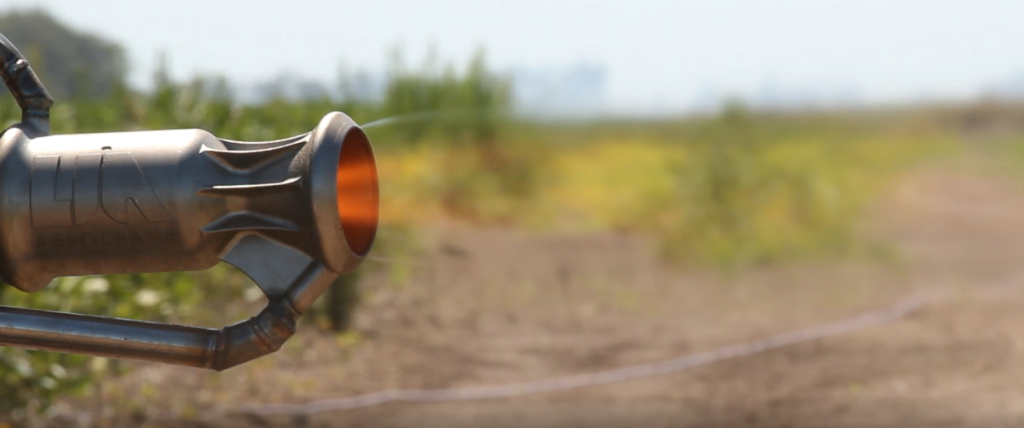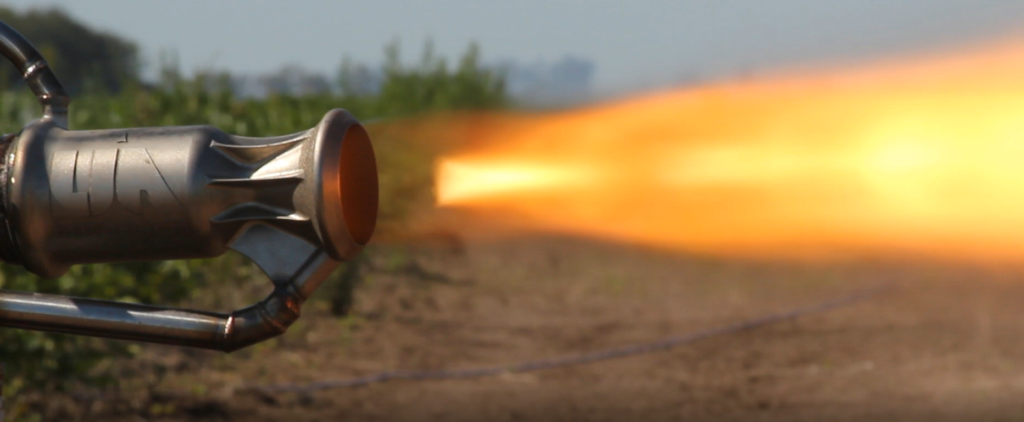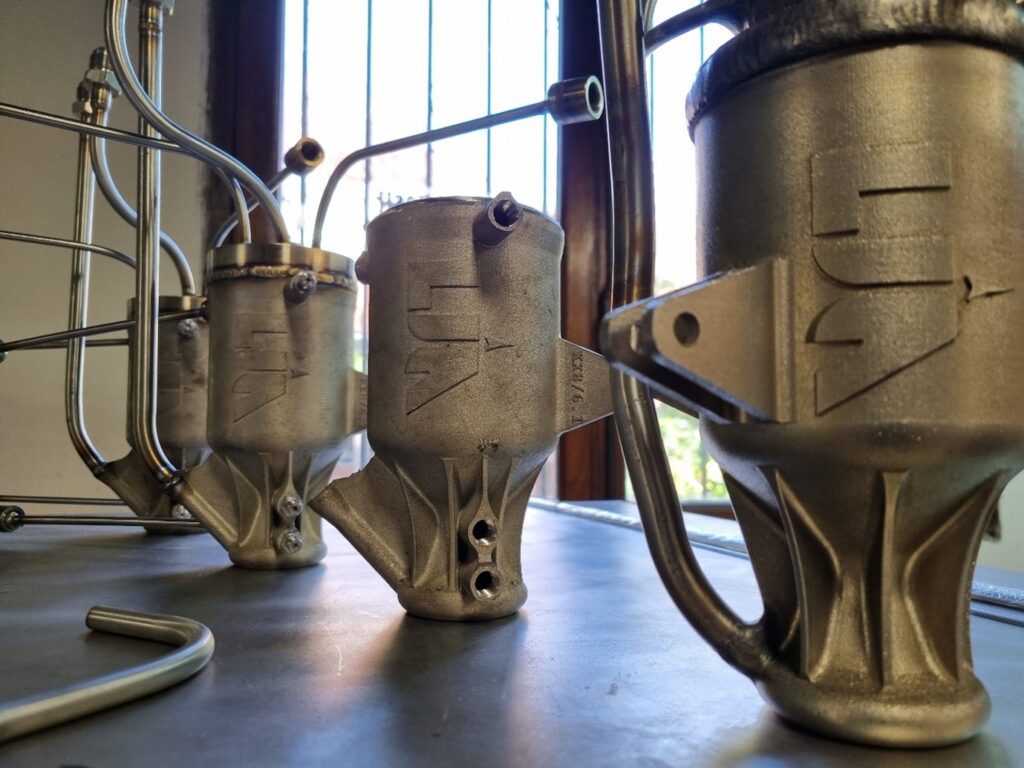LIA Aerospace
Marketing

3D printing rocket engines at Westcott Innovation Centre
Route to Impact
Space propulsion is a building block for the future of space infrastructure logistics.
LIA Aerospace’s vision is to decarbonise the space economy by selling green propulsion systems for satellites and later net-zero rocket engines for launch vehicles. Their propulsion systems will help the space economy to grow fast and reliably, from launch, to in-orbit manoeuvring.
LIA Aerospace began with 3D printing of aerospace grade superalloys, called ‘thrusters’.
Their first chambers were made in a traditional way. This means using machining and welding processes, which are incredibly time-consuming, and the quality control of each process is very long. They needed a shorter process to create their thrusters which would enhance their effectiveness when being tested.
They also looked into the design of real aerospace thrusters which are made with the same material that commercial rocket companies use and questioned whether making the thrusters with a new material would achieve better results when testing the thrusters with their propulsion systems.
Solution
After receiving grant funding from the IUK Edge Grant, LIA Aerospace began working with Satellite Applications Catapult on CAD designs for the thrusters. These were carefully and extensively reviewed by the Catapult’s engineers and experts and then modified for achieving maximum performance and quality.
With their expertise and access to an additive manufacturing 3D metal printer, three thrust chambers were built. The grant funding allowed for LIA Aerospace to use their desired material to build the thrusters using additive manufacturing methods: a material called Inconel 718. Previously the material used for the manufacturing of thrusters would not be classified as a superalloy and therefore would affect their durability and performance. In less than a month three thrusters were designed and manufactured in the Catapult’s Westcott Innovation Centre using the MetalFab1 3D metal printer.
By using a new material and the expertise at the Catapult, LIA Aerospace were able to generate greater reliability in their manufacturing and an accelerated design process.


Thruster KX11.2 hot firings (Hypergolic start – above, Kerosine burn – below)
Outcomes
Once the three thrusters were built, they were hot fire tested to measure their performance. Working with Satellite Applications Catapult on the designs helped LIA Aerospace to understand the physics and thermodynamics of the heat transfer between the hot gas, the chamber walls, and the cooling fluid through temperature and pressure loss in the channels. The performance results were an increased burn time which meant that their design and the material used to make the thrusters worked to achieve the maximum performance.
“The Satellite Applications Catapult at Westcott Venture Park played a crucial role in accelerating the development of critical components with the use of the Westcott Innovation Centre facility. The collaboration has taken us a step closer to launching this technology into space and being a commercial provider of green space propulsion systems.”
Dan Etenberg, CEO at LIA Aerospace
The Future
The next big milestone for LIA Aerospace is testing their technology in space successfully and then starting the commercialisation of their thrusters. The iteration and hot firing of LIA’s thrusters are intended to lead them to designing a bullet-proof thruster that will resist the extreme temperatures and pressures built inside them.
In the future their propulsion systems, thrusters and rocket engines will be sold to satellite, spacecraft, and rocket manufacturers. They also hope to partner with companies developing space manufacturing and help them deploy their systems faster and make the space economy grow without extended delays in lead times associated with these systems.

Thruster KX8.1 V5, V6.1, V6.2, and V6.3 being machined and welded in the LIA Aerospace lab




